Yuki-Onna ‘Lady Of The Snow’: A Female Demon And Symbol Of Death In Japanese Mythology
A. Sutherland - AncientPages.com - Yuki-Onna or the ‘Lady of the Snow’ is an evil spirit (yōkai) lurking around and waiting for people lost in a snowstorm. She is a female demon and a symbol of death in Japanese mythology.
Yuki-onna is far from being kind, attractive and benevolent and her attributes are not unlike that of a vampire.
How Does Yuki-Onna Look Like And Where Does She Come From?
Yuki-onna, also called ‘yuki joro’ (snow woman), ‘yuki anesa’ (snow sister), ‘yuki banba’ (snow baba) and ‘ yuki hime’ (snow princess), was once a pregnant woman who was not helped during the snowstorm.
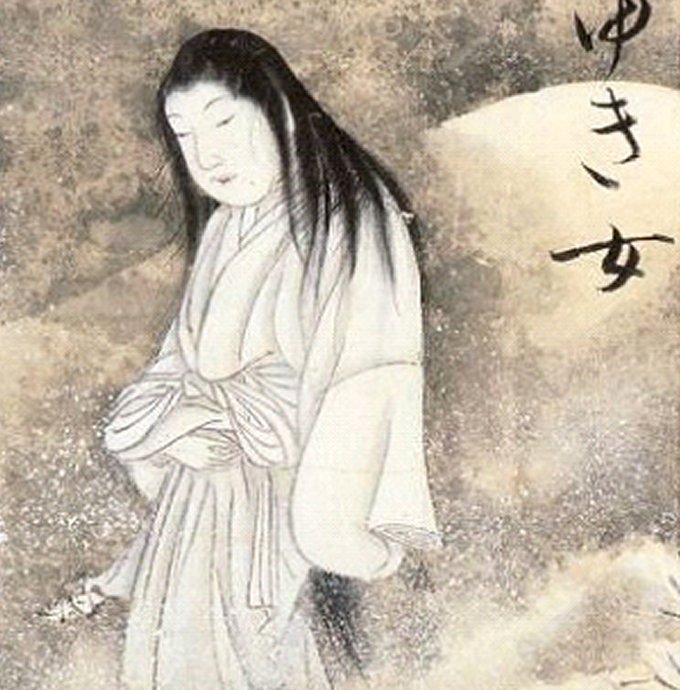
Yuki-onna, the snow woman from the Hyakkai-Zukan. source
Unable to find shelter, she was covered with snow on the mountainside. Dying slowly from the cold, she was very unhappy that no one wanted to help her and simply left her to die.
Yuki-onna appears on snowy nights as a tall, beautiful woman with long black hair and blue lips. Her extremely pale, almost transparent skin makes her almost invisible to the snowy landscape and to her victims as well. Despite her unusual beauty, she looks ghastly and eerie, and her eyes can terrify mortals. Sometimes, she is described as dressed in kimono and occasionally she even appears naked.
She floats across the snow, leaving no footprints. In some versions of Yuki-onna tales, she has no feet, which in Japanese beliefs means she is a ghost.
She can disguise herself into a cloud of mist or snow if threatened.
In legends, Yuki-onna is ‘onryo’, is an evil ghost driven by vengeance, believed to be capable of harming and even killing. She takes revenge on people who did not help her in need.
Even in different regions of Japan, there was an ancient belief in Yuki-onna, an evil and very deceptive demon. She is particularly dangerous for children when darkness falls and snow is accumulating on the ground. It is important that parents do not let their children outside. Legends say that during the snowstorm, the wind carries the laments and painful cries of the victims.
Legend About Yuki-onna And Two Woodcutters
A long time ago, there lived two woodcutters, Minokichi and Mosaku. Minokichi was young and Mosaku was very old.
One winter day, they could not come back home because of a snowstorm. They found a hut in the mountain and decided to sleep there. On this particular evening, Minokichi woke up and found a beautiful lady in white clothes. She breathed on old Mosaku and he was frozen to death.
The dangerous Japanese snow woman Yuki-Onna is a symbol of death. Credit: Yokai Wiki
She then approached Minokichi to breathe on him, but stared at him for a while, and said, "I thought I was going to kill you, the same as that old man, but I will not because you are young and beautiful. You must not tell anyone about this incident. If you tell anyone about me, I will kill you."
Several years later, Minokichi met a beautiful young lady, named Oyuki (Yuki = "snow") and married her. She was a good wife. Minokichi and Oyuki had several children and lived happily for many years. Mysteriously, she did not age.
One night, after the children were asleep, Minokichi said to Oyuki: "Whenever I see you, I am reminded of a mysterious incident that happened to me. When I was young, I met a beautiful young lady like you. I do not know if it was a dream or if she was a Yuki-onna..."
After finishing his story, Oyuki suddenly stood up, and said "That woman you met was me! I told you that I would kill you if you ever told anyone about that incident. However, I can't kill you because of our children. Take care of our children..."
Then she melted and vanished without a trace. No one saw her again.
Updated on November 25, 2021
Written by – A. Sutherland - AncientPages.com Senior Staff Writer
Copyright © AncientPages.com All rights reserved. This material may not be published, broadcast, rewritten or redistributed in whole or part without the express written permission of AncientPages.com
Expand for referencesReferences:
Hadland D.F. Myths & Legends of Japan
A.B. Mitford A. B. Tales of Old Japan
More From Ancient Pages
-
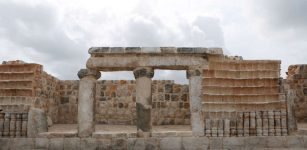 Ancient Mayan City Filled With Palaces, Pyramids And Plazas Discovered On Construction Site In Mexico
Archaeology | May 27, 2022
Ancient Mayan City Filled With Palaces, Pyramids And Plazas Discovered On Construction Site In Mexico
Archaeology | May 27, 2022 -
 Asgard: Enter The Ancient Kingdom Of The Powerful Norse Gods
Featured Stories | Aug 7, 2016
Asgard: Enter The Ancient Kingdom Of The Powerful Norse Gods
Featured Stories | Aug 7, 2016 -
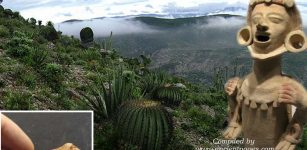 Unexpected Discovery Reveals People Arrived In North America 20,000 Years Earlier Than Previously Thought
Archaeology | Jun 5, 2021
Unexpected Discovery Reveals People Arrived In North America 20,000 Years Earlier Than Previously Thought
Archaeology | Jun 5, 2021 -
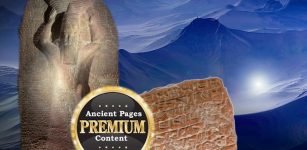 Can King Ashurbanipal’s Strange Clay Tablet Unravel The Mystery Of The Lunar Kings
Ancient Mysteries | Nov 9, 2021
Can King Ashurbanipal’s Strange Clay Tablet Unravel The Mystery Of The Lunar Kings
Ancient Mysteries | Nov 9, 2021 -
 Englishmen Jailed For Stealing Rare Viking Hoard Worth Millions
Archaeology | Dec 1, 2019
Englishmen Jailed For Stealing Rare Viking Hoard Worth Millions
Archaeology | Dec 1, 2019 -
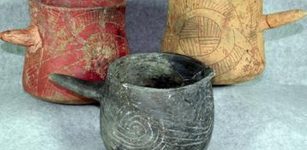 Cocoa, Caffeinated ‘Black Drink’ Widely Used In Native American Societies
News | Sep 8, 2015
Cocoa, Caffeinated ‘Black Drink’ Widely Used In Native American Societies
News | Sep 8, 2015 -
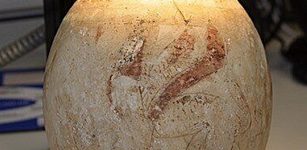 5,000-Year-Old Mystery: Decoration Of Eggs Predates Our Easter Tradition
Archaeology | Apr 9, 2020
5,000-Year-Old Mystery: Decoration Of Eggs Predates Our Easter Tradition
Archaeology | Apr 9, 2020 -
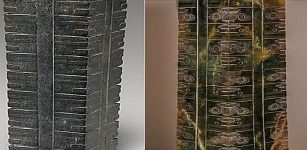 Mysterious Jade Cong – Perplexing Ancient Chinese Artifact
Featured Stories | Jan 3, 2023
Mysterious Jade Cong – Perplexing Ancient Chinese Artifact
Featured Stories | Jan 3, 2023 -
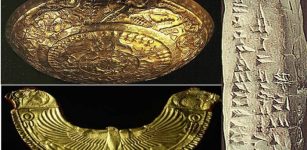 Forgotten Ancient Ugarit: One Of The Flourishing And Oldest Cities Of Canaan
Featured Stories | Jun 15, 2023
Forgotten Ancient Ugarit: One Of The Flourishing And Oldest Cities Of Canaan
Featured Stories | Jun 15, 2023 -
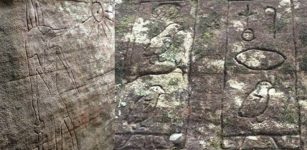 Mysterious Gosford Glyphs: Remarkable Ancient Egyptian Hieroglyphs Discovered In Australia Could Re-Write History
Featured Stories | Feb 20, 2020
Mysterious Gosford Glyphs: Remarkable Ancient Egyptian Hieroglyphs Discovered In Australia Could Re-Write History
Featured Stories | Feb 20, 2020 -
 Megaliths In Central France: 30 Prehistoric Monolith Stones And One Human Skeleton – Unearthed
Archaeology | Sep 11, 2019
Megaliths In Central France: 30 Prehistoric Monolith Stones And One Human Skeleton – Unearthed
Archaeology | Sep 11, 2019 -
 Aboriginal ‘Memories’ Of Australia’s Coastline Go Back More Than 7,000 Years
Civilizations | Sep 30, 2015
Aboriginal ‘Memories’ Of Australia’s Coastline Go Back More Than 7,000 Years
Civilizations | Sep 30, 2015 -
 Oldest Canoe Ever Discovered In Maine – It Dates To 1280-1380 A.D
Archaeology | Jun 13, 2019
Oldest Canoe Ever Discovered In Maine – It Dates To 1280-1380 A.D
Archaeology | Jun 13, 2019 -
 Controversial Unexplained Ancient Mystery In Mongolia – Horrifying Sight – Part 2
Ancient Mysteries | May 2, 2018
Controversial Unexplained Ancient Mystery In Mongolia – Horrifying Sight – Part 2
Ancient Mysteries | May 2, 2018 -
 2,000-Year-Old Instruments Used By Roman Surgeons Revealed By Archaeological Scanners
Archaeology | Jul 17, 2024
2,000-Year-Old Instruments Used By Roman Surgeons Revealed By Archaeological Scanners
Archaeology | Jul 17, 2024 -
 Outstanding Discovery Of Unique Swords From The Viking Age Near Gausel Queen’s Grave
Archaeology | Jun 3, 2022
Outstanding Discovery Of Unique Swords From The Viking Age Near Gausel Queen’s Grave
Archaeology | Jun 3, 2022 -
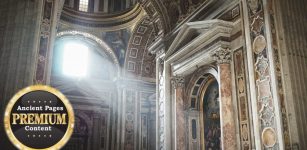 Unusual Relic That Mysteriously Disappeared From The Vatican
Ancient Mysteries | Nov 8, 2018
Unusual Relic That Mysteriously Disappeared From The Vatican
Ancient Mysteries | Nov 8, 2018 -
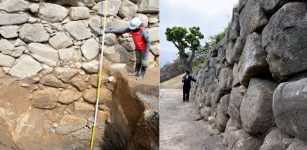 Excavations At Okazaki Castle Reveal A 400-Year-Old Massive Unbroken Wall
Archaeology | Apr 16, 2016
Excavations At Okazaki Castle Reveal A 400-Year-Old Massive Unbroken Wall
Archaeology | Apr 16, 2016 -
 Shipboard Cannon Found On The Swedish West Coast May Be Europe’s Oldest!
Archaeology | Sep 12, 2023
Shipboard Cannon Found On The Swedish West Coast May Be Europe’s Oldest!
Archaeology | Sep 12, 2023 -
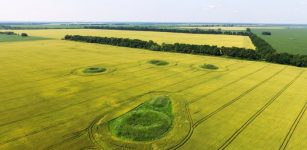 Bezvodovka: Little Known Ancient Solar Observatory In Ukraine Reveals Its Secrets
Archaeoastronomy | Jan 4, 2017
Bezvodovka: Little Known Ancient Solar Observatory In Ukraine Reveals Its Secrets
Archaeoastronomy | Jan 4, 2017

